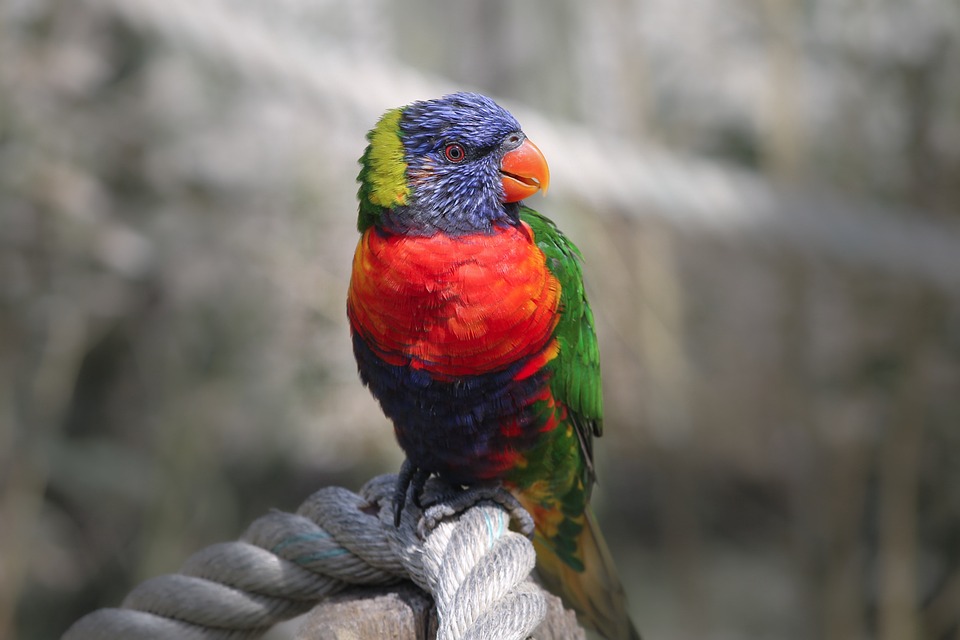Training parrots to perform tricks can be a fun and rewarding experience for bird owners. Not only does it provide entertainment for the audience, but it also strengthens the bond between the parrot and its owner. However, getting your parrot to confidently perform in front of an audience can be a challenge. In this article, we will explore effective training techniques that encourage parrots to perform tricks confidently and captivate their audience.
Creating a positive environment for training is crucial in encouraging parrots to perform tricks. This includes establishing trust and bonding with your parrot. Spend quality time with your bird, engage in positive interactions, and provide plenty of praise and rewards. A strong bond will make training sessions more enjoyable for both you and your parrot.
Additionally, providing a safe and comfortable training space is essential. Choose a quiet area free from distractions where you can focus on training. Make sure the training space is well-lit and has enough room for your parrot to move around comfortably. Creating a positive environment will help your parrot feel at ease and ready to learn.
When starting with basic trick training, begin with simple tricks that your parrot can easily grasp. This could include teaching them to wave, turn around, or step up onto your hand. Use positive reinforcement techniques such as offering treats, praise, or a favorite toy to reward your parrot for successfully performing the trick. This encourages them to associate performing tricks with positive experiences.
Consistency and repetition are key in parrot training. Practice the tricks regularly, preferably in short sessions multiple times a day. This helps reinforce the desired behavior and ensures that your parrot remembers what it has learned. Be patient and understanding, as each parrot learns at its own pace.
As your parrot becomes more proficient in basic tricks, you can gradually introduce more complex tricks. Build upon the foundation of basic tricks and gradually increase the difficulty level. This keeps your parrot engaged and challenged, while also showcasing its abilities to the audience.
Clicker training can be a useful tool in advanced trick training. The clicker is a small handheld device that makes a distinct sound when pressed. By associating the sound of the clicker with a reward, you can communicate with your parrot more effectively. Clicker training allows for precise timing and helps in shaping desired behaviors. However, it is not essential, and parrots can still learn tricks without it.
When training for performance, it is important to introduce props and stimuli that your parrot will encounter during the actual performance. This helps familiarize them with the environment and reduces the chances of stage fright. Incorporating music or verbal cues can also help your parrot understand when it is time to perform. Gradually increase the distractions and stimuli during training to simulate a real performance scenario.
If your parrot experiences stage fright or refuses to perform in front of an audience, it is important to address their fears and concerns. Gradually introduce the audience, starting with a small number of familiar faces, and gradually increasing the size of the audience. Familiarize your parrot with different environments by taking them to new places and exposing them to different sights and sounds. This helps build their confidence and reduces anxiety.
Some frequently asked questions regarding parrot training include whether any parrot can learn tricks, how long it takes to train a parrot, what treats can be used as positive reinforcement, what to do if a parrot refuses to perform, whether parrots can perform tricks without clicker training, and how to prevent stage fright.
In conclusion, training parrots to perform tricks in front of an audience requires time, patience, and a positive training approach. By establishing a trusting relationship, utilizing positive reinforcement, and gradually building up the bird’s confidence, you can encourage your parrot to showcase its tricks with pride. Remember, each parrot is unique, so adapt your training methods to suit your bird’s individual needs and abilities. With dedication and practice, your parrot will become a star performer that captivates any audience!









